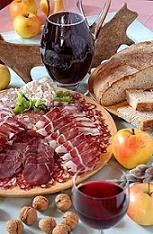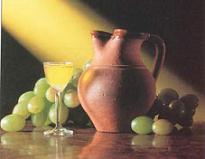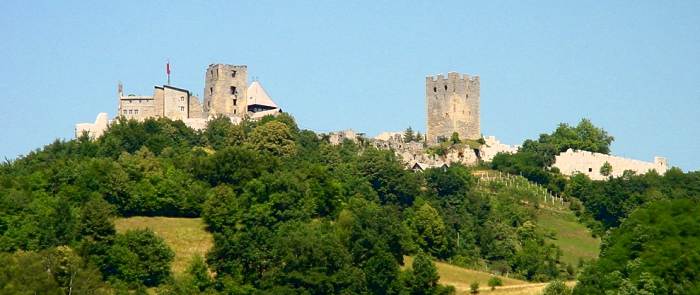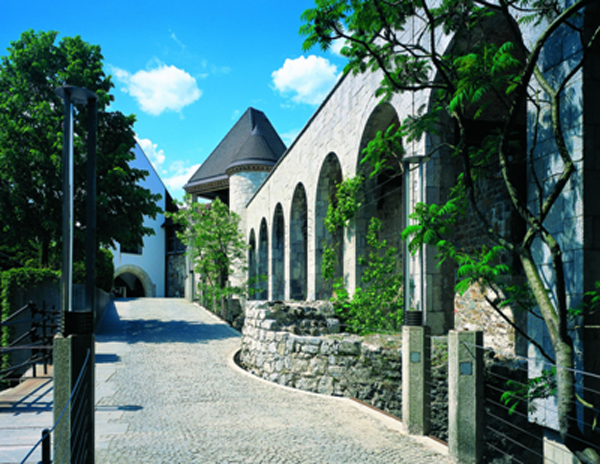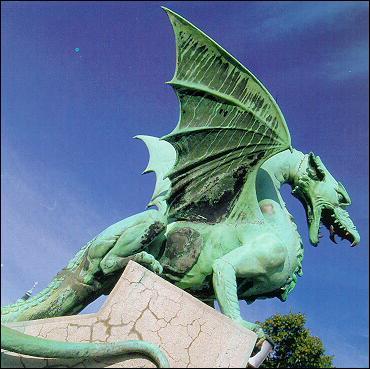TOURIST INFORAMATIONSlovenia is situated along the foothills of the southern end of chain of Alps, at the very tip of the most northerly Mediterranean bay, open towards Hungary on the east and Croatia on the south. It is a natural hub of European routes from north to south and west to east. See Slovenian panoramas
Typical Slovene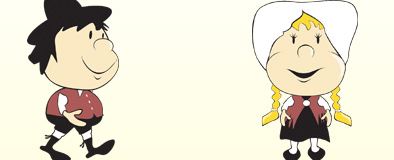
Culinary of SloveniaSlovenia is a hospitable country which surprises its visitors with the abundance of traditional Slovenian food as well as culinary masterpieces which originated outside the country but have received a Slovenian touch. To complement our dishes there have always been excellent wines of three Slovenian wine growing regions. You can encounter all the pleasures on wine roads and in numerous traditional gostilnas. Gostilna is the heart of the Slovenian culinary offer. Beside drinks the offer of gostilna has to include at least three dishes, which are typical of the environment or region. Gostilnas are often owned by families and mainly preserve the tradition in their offer and fittings, and in preparing homemade dishes they preserve the principles of healthy nutrition. Culinary offer is supplemented by excellent Slovenian wines, especially in the wine growing regions. Gostilnas are famous for homeliness and genuine hospitality - that is one of the reasons why guests like coming there again and again.
Castles in Slovenia: Ljubljana castle, Castle of the Counts of Celje, Predjama castle by Postojna, Dornava castle near Ptuj, Ptuj castle, castle Otočec, Bled castle,... Slovenia in picturesLjubljana is situated in the middle of Slovenia. From Ljubljana it is very easy to visit several great touristic places:
Sights of Ljubljana:
The municipality Ljubljana connected Ljubljana Castle with the old city core at the end of year 2006 by an urban means of transport – a funicular railway. The topography of the delicate location imposed certain spatial limitations and demands in regard to design, so the best solution proved to be a funicular railway. The idea, the wish and now also the need to build a funicular railway that would connect the old city core and Ljubljana Castle have not appeared in the last five years – they are more than hundred years old.
There is proven evidence that Ljubljana's castle hill, the site of the city's most striking landmark, was inhabited as early as in the 12th century BC.The earliest evidence of a hilltop settlement are archaeological remains of the Urnfield culture. The castle hill's earliest known fortification of considerable dimensions was built in Illyrian and Celtic times. The top of the hill was probably also the site of a Roman stronghold. The 9th century saw the building of a medieval castle, first mentioned in a document dating from between 1112 and 1125, when the castle was the seat of the Counts of Spanheim, the local rulers known to have coined their own money in Ljubljana. In 1335 the castle became the hereditary property of the house of Hapsburg and the centre of the Duchy of Carniola. In the second half of the 15th century a new, larger, circular castle was built by Duke Frederick III of Hapsburg, later crowned Holy Roman Emperor. Except for the outer walls of the Chapel of St. George (Kapela sv. Jurija), consecrated in 1489, all the main parts of the present castle were either built or rebuilt in the 16th and 17th centuries. Until 1814 the castle served as a garrison and after that as a provincial prison. 1848 saw the building of the castle's Outlook Tower (Razgledni stolp), the home of a guard whose duty was to fire cannons to warn of fire or announce important visitors or events - a duty previously performed by town servants at the Pipers' Tower (Stolp piskačev). In 1905 the castle was purchased by the Municipality of Ljubljana to be used for cultural purposes, but until 1964 it was mainly a residential dwelling. Afterwards it underwent a renovation which is still going on. Since 2000, the castle has been administered by the Festival Ljubljana event management company. Ljubljana Castle adds a special touch to the city's cultural vibrancy. It is an attractive tourist sight and a picturesque venue for concerts, theatre performances, exhibitions, conferences and official functions.
The central of the present three bridges forming the Triple Bridge (Tromostovje) has stood in its place since 1842, when it replaced an old, strategically important medieval wooden bridge, which used to be a transit route between the countries of the Northwestern Europe and the Southeastern Europe including the Balkans. The Triple Bridge as a unique architectural speciality of Ljubljana was created when between the years 1929 and 1932 two more bridges, intended for pedestrians, were added to the original stone bridge by architect Jože Plečnik. Plečnik removed the metal balustrades from the old stone bridge and furnished all the three bridges with massive stone balustrades and lamps. From each of the side bridges two stairways lead to the terraces situated just above the river, where poplar trees were planted to contribute to the overall appearance of the bridge. On the right bank of the river, the bridge is enhanced by a small gift shop sited at the end of the Ljubljana Central Market colonnade, and on the right bank by a kiosk. Positioned on the crossing of the river axis and the axis running between the Rožnik hill and the Castle Hill, the Triple Bridge is the key point on Plečnik's urban axes. In 1992, the Triple Bridge was thoroughly renovated.
| |

